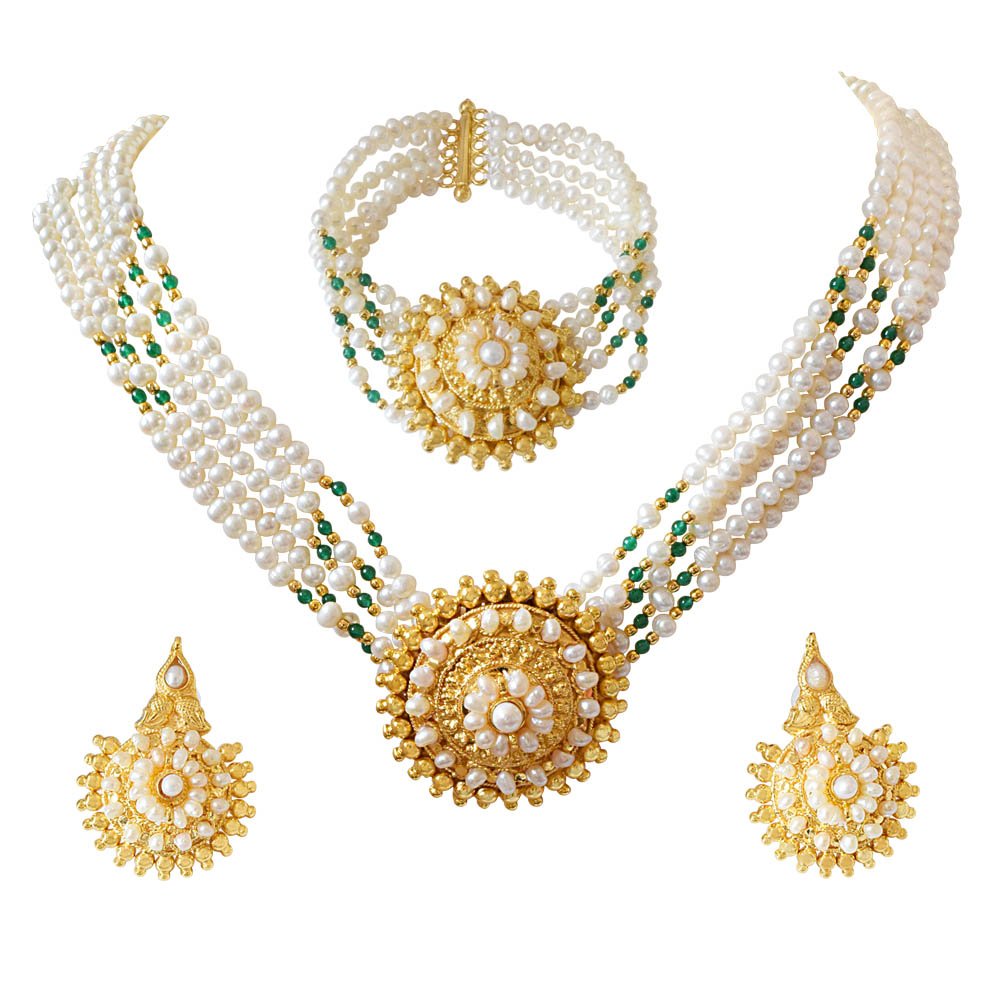Jewellery holds an esteemed place in Indian culture, deeply intertwined with the nation’s traditions, beliefs, and rituals. Far more than decorative ornaments, Indian jewellery embodies heritage, identity, and social standing. Its historical significance and deep cultural ties make it a unique bridge between generations, reflecting the spirit of a timeless tradition.
Indian jewellery's importance extends to every aspect of life, from personal milestones to grand societal rituals. Its evolution over the centuries has mirrored the country’s diverse cultural tapestry, incorporating artistry, symbolism, and functionality into its design.

A Glimpse into History: Jewellery as a Cultural Pillar
The roots of Indian jewellery stretch back to ancient civilizations. The Indus Valley Civilization provides evidence of the early use of gold, silver, and gemstones. These ornaments were not just aesthetic but carried spiritual and symbolic meanings, often used in rituals and as amulets to ward off evil.
Over centuries, jewellery has become an essential marker of social and economic status. Kings and queens adorned themselves with opulent pieces crafted with precision and embedded with rare gems. These royal treasures not only signified power but also played a role in diplomacy and trade.
In modern times, the legacy of these designs lives on, with each region of India boasting unique styles. Whether it’s the intricate temple jewellery of Tamil Nadu or the regal Kundan pieces of Rajasthan, the country’s jewellery encapsulates centuries of tradition and craftsmanship.
Jewellery as a Heirloom
One of the most cherished aspects of Indian jewellery is its role as an heirloom. Passed down through generations, these pieces carry with them the blessings, memories, and values of ancestors. A mother’s necklace or a grandmother’s bangles are often viewed as treasures that connect the wearer to their familial roots.
The practice of gifting jewellery during weddings and other significant events ensures the preservation of this cultural heritage. For instance, gold jewellery gifted to brides during weddings is both a form of wealth transfer and a symbol of the family’s love and blessings.
The traditional craftsmanship of jewellery like Meenakari, Polki, and Jadau speaks to this enduring legacy. These styles, characterized by their meticulous artistry, are as valuable for their emotional significance as their material worth.
Symbolism in Rituals and Traditions
Jewellery in Indian culture is deeply symbolic, often carrying profound spiritual meanings. For example:
- Mangalsutra: Worn by married women, this sacred necklace symbolizes marital harmony and the husband’s long life.
- Bangles: Associated with prosperity and fertility, they are worn during weddings and festivals to signify happiness.
- Toe Rings and Nose Rings: These adornments, often tied to marriage, hold cultural and medicinal significance, believed to regulate bodily energies.
Beyond personal adornment, jewellery also finds its place in religious rituals. Temples are often adorned with gold offerings, and deities are embellished with elaborate jewellery, symbolizing devotion and abundance.
Gemstones, too, play a significant role in Indian beliefs. Astrology and spirituality often dictate the use of specific stones to attract positive energies and ward off malefic planetary influences.
Also Read: Affordable fashion brands for women
The Role of Jewellery in Milestones and Festivals
Jewellery is integral to celebrating life’s significant milestones in Indian culture. From a newborn’s first gold bracelet to the elaborate bridal sets worn during weddings, jewellery marks every stage of life.
Weddings, in particular, are incomplete without jewellery. The bridal jewellery set is carefully curated to ensure auspiciousness, beauty, and cultural significance. Each piece, from the maang tikka to anklets, is steeped in tradition, symbolizing blessings for a prosperous married life.
During festivals like Diwali and Akshaya Tritiya, it is customary to buy and wear new jewellery. Gold, considered a symbol of wealth and good fortune, is especially sought after during these times. This tradition reinforces the belief that jewellery is not just ornamental but a harbinger of prosperity.
Regional Diversity in Jewellery
India’s regional diversity is vividly reflected in its jewellery designs. Each region has its own style, influenced by local culture and history.
- Temple Jewellery: Originating in Tamil Nadu, it features motifs of gods and goddesses and is worn during religious ceremonies and classical dance performances.
- Kundan Jewellery: With its roots in Rajasthan, it is known for its uncut gemstones set in gold, epitomizing royal elegance.
- Meenakari: This enamelled jewellery from Gujarat and Rajasthan showcases vibrant colours and intricate detailing.
- Polki Jewellery: Made with uncut diamonds, this style is synonymous with regal opulence.
These regional styles ensure that Indian jewellery remains as diverse as the country itself, preserving local traditions while contributing to the broader cultural mosaic.
Challenges in Modern Times
Despite its rich heritage, Indian jewellery faces challenges in modern times. The fast-paced, trend-driven world has led to a decline in appreciation for traditional craftsmanship. Mass-produced jewellery often takes precedence over handcrafted pieces, threatening the livelihoods of artisans who rely on these age-old techniques.
Additionally, the rising costs of precious metals and gemstones have made traditional jewellery less accessible to the average consumer. This has led to a surge in the popularity of artificial jewellery, which, while affordable, lacks the cultural and emotional depth of traditional pieces.
Educating consumers about the cultural and historical significance of traditional jewellery is crucial to preserving this heritage. Investments in traditional jewellery should be seen not just as purchases but as contributions to a legacy that deserves to be passed on.
Reviving and Preserving the Legacy
Preserving the legacy of Indian jewellery requires a collaborative effort from artisans, consumers, and the industry. Supporting local artisans by purchasing handcrafted jewellery can go a long way in ensuring that traditional techniques are not lost.
The jewellery industry must also take responsibility by promoting traditional designs as timeless investments. Awareness campaigns and incentives can encourage consumers to choose heritage jewellery over mass-produced alternatives.
Designers can bridge the gap between tradition and modernity by creating contemporary pieces that retain the essence of traditional jewellery. Such innovations can attract younger consumers while keeping the cultural significance intact.
Embracing the Essence of Indian Jewellery
Jewellery in Indian culture is more than an accessory; it is a profound expression of heritage, spirituality, and identity. Its timeless appeal lies in its ability to transcend generations, carrying with it the stories and memories of the past.
As consumers, we have a responsibility to recognize the deeper value of jewellery. By investing in traditional pieces, we not only support the artisans who craft them but also preserve an integral part of our culture.
Conclusion: A Timeless Tradition
The importance of jewellery in Indian culture cannot be overstated. It is a reflection of a rich heritage that values artistry, spirituality, and emotional connection. While trends may come and go, the legacy of traditional jewellery remains unshaken.
To preserve this timeless tradition, we must make conscious choices that honour the craftsmanship, symbolism, and cultural significance of Indian jewellery. By doing so, we ensure that future generations can continue to cherish and celebrate this beautiful aspect of Indian culture.
